March 20 at 11:24, 80520 views
• Print
Subscribe for new videos
Series TV Philips DesignLine, as the name implies, has always brought bright design features and attracted a lot of attention. Philips Model Series PDL8908S here stands she has already won two prestigious awards at once in the field of industrial design – Red Dot Design (2013) and the iF Product Design Award (2014). We decided to look at “the Oscar-winning” TV with a sleek design with your own eyes, and at the same time and see how it manifests itself in the fact.
Key Features
- Soaring design with a single sheet of glass
- Diagonal Screen 46 and 55 inches
- LCD panel Full HD (1920 x 1080 pixels)
- Side LED-lights
- Trilateral backlight Ambilight Spectra XL
- Perfect Motion Rate 1400Hz
- Built-in speaker: 2 x 15 W
- function EasyLink (HDMI-control devices from a single console)
- DVB-T/T2, DVB-C, DVB-S2
- Support DLNA
- Support multimedia playback from USB-drives
- Interactive Platform Philips Smart TV
- Support Wi-Fi Miracast
Index of video processing
Digital tuners
model was tested on Philips 46PDL8908S/60 46 inches (117 cm). The average price – 79 000 rubles.
design and construction
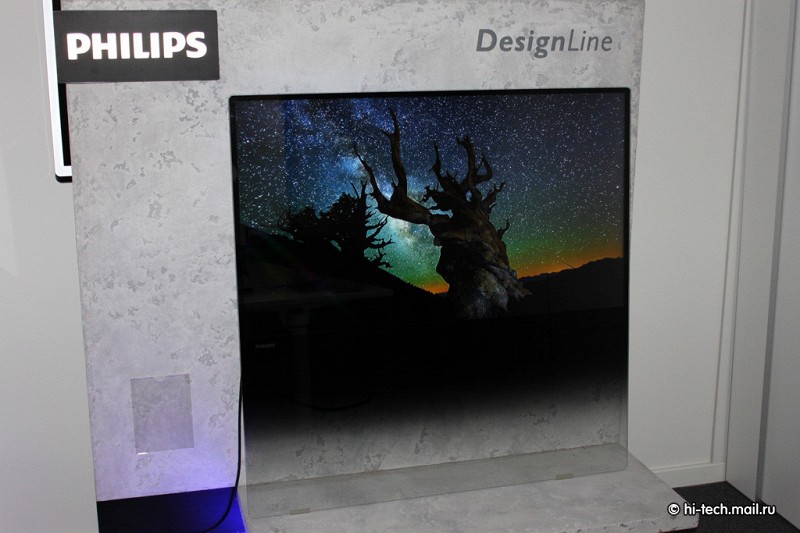
First look at Philips DesignLine PDL8908S leaves no doubt – this TV is really difficult to find any association of the previously released models. In fact, the model root form factor, and its “floating” screen combined with translucent stand under a single sheet of glass. Looks really elegant and unusual. But if memory strain, these elements we somehow have already seen – a single sheet of glass has been used in Panasonic and Sony, and “square” TVs were at Bang & Olufsen. However, “everything is new – is well forgotten old”, and Philips were able to pick up an interesting combination that looks fresh on the general background.
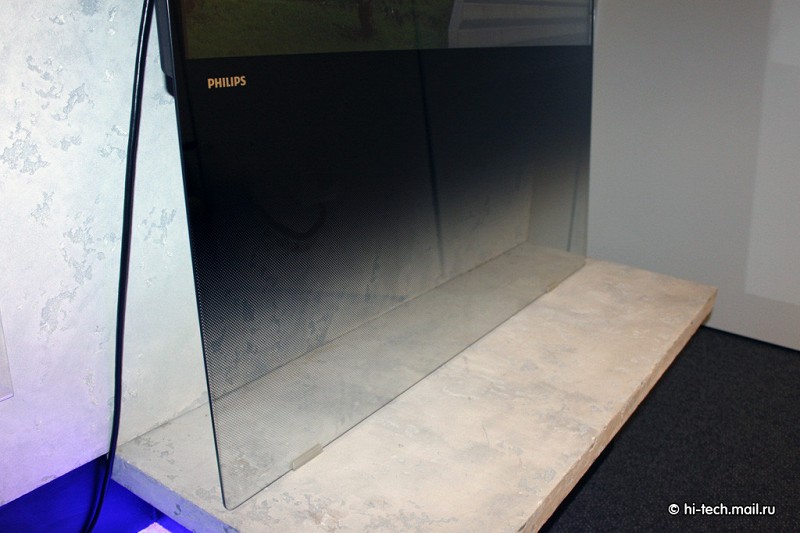
Stand with beautiful gradient transition rather plays a decorative role. Of course, you can rest my TV to the wall, but it does not guarantee complete immunity. The surest way to – wall mount, when the main load is undertaken bracket. Transparent surface is decorated with a gradient transition from “checkerboard” pattern.
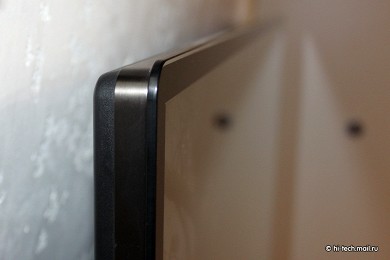
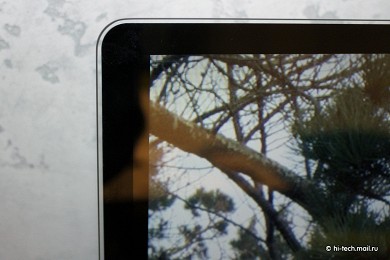
Frame TV is not as thin as we are accustomed to seeing on the latest models with LED-backlit. However, this is a consequence of the design using a single sheet of glass – it forms an additional transparent edge around the screen.
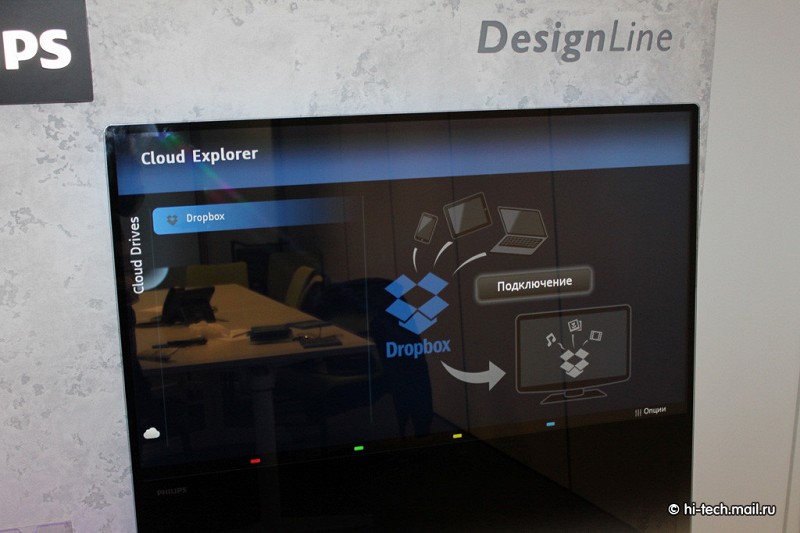
Quite expectedly, that a single sheet of glass that looks advantageous from an aesthetic point of view, is not very practical. Glass set with a small air gap above the LCD matrix, anti-reflective coating is not too effective, so prone to glare screen TV. To the extent that in a bright room image “drowning” in reflections, and you have to turn up the brightness. Apparently, this is an inevitable sacrifice in favor of the design. So designer TV Philips DesignLine better suited for moderately lit rooms, where at the same time be able to open the backlight Ambilight Spectra XL.
interfaces, management and functionality
set of interfaces similar to other models of Philips. Most valuable connectors HDMI – 4 pieces. Apparently, this amount has stopped most of the manufacturers.
Analog Connections left a bit: there are inputs for general and satellite antenna, and SCART connectors and Y / Pb / Pr are made in the form of remote adapters that are supplied with the TV. Also located behind: Ethernet (RJ45), 3xUSB, Common Interface, optical audio output and a headphone jack.
USB connectors allow you to connect external drives and play entertainment content, a list of supported formats is quite wide. For example, supported video formats AVI, WMV, MOV, 3GP and so on. Supports multiple options and MKV, one of the most popular containers for HD-video. Of course, no one can guarantee 100% compatibility with any files, but the built-in player is versatile enough. For example, our selection of test files played back without problems built-in player that can not but rejoice.
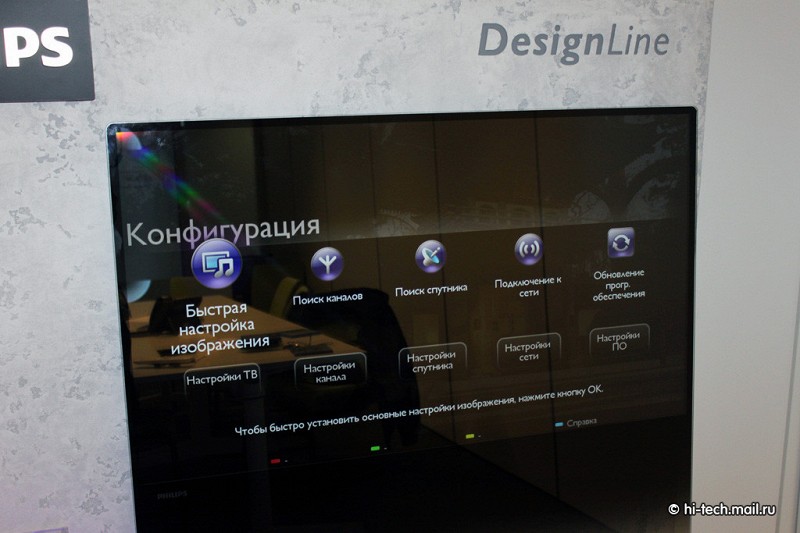
For wireless network connection has a built Wi-Fi adapter that supports the 802.11b/g/n. Also there is a protocol support DLNA – you can watch videos and other files from your home media server on the network.
features rich tuners came on board the TV has support for all kinds of Digital TV: DVB-C, DVB-S2 and DVB-T2. The latter is particularly important for the Russian audience, as our broadcasting is gradually moving to the digital standard DVB-T2. As a function of recording a digital broadcast on the USB HDD.
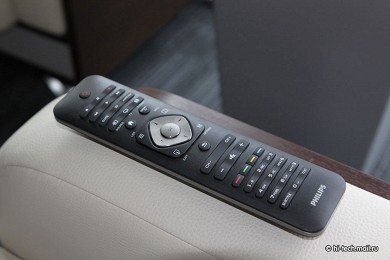
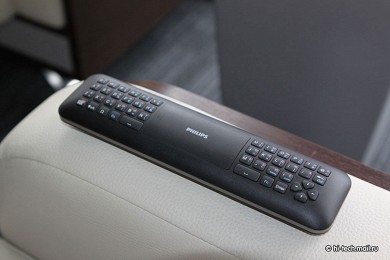
Complete with a TV attached familiar from past models Philips remote control. On the reverse side of the remote has a special QWERTY-keyboard for typing in the system Philips Smart TV. Anyway, it’s easier than typing using the onscreen keyboard.
Among other things, the remote control is capable of operating in “pointers” driving like a computer mouse cursor. In my opinion, management in this case lacks precision and responsiveness – it’s possible this is a problem purely programmatic.
Philips Smart TV
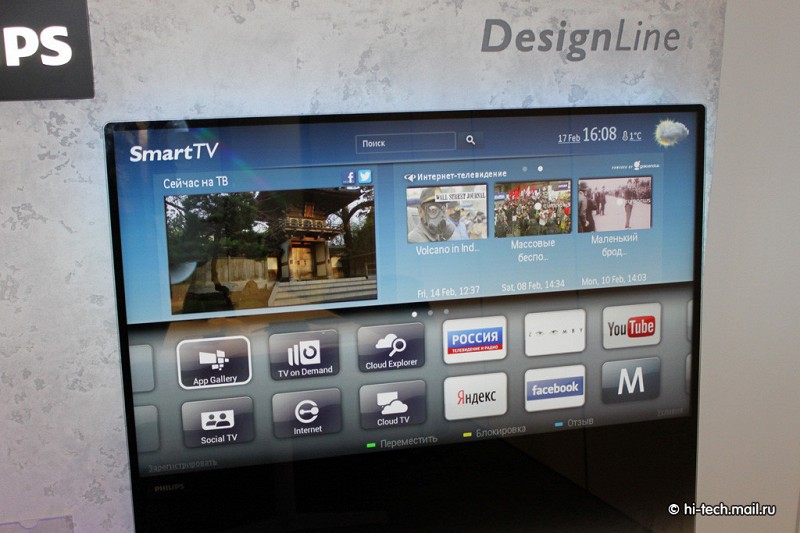
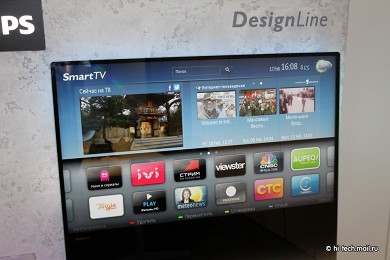
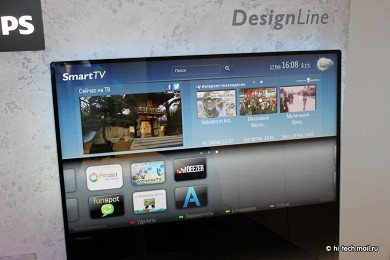
We have examined the interactive system Philips Smart TV on the model 46PFL8008. But since then there have been some changes that should be discussed separately.
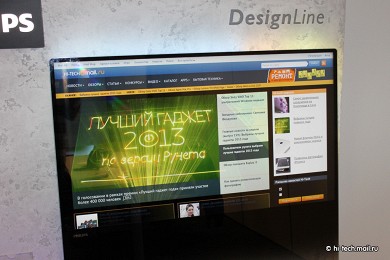
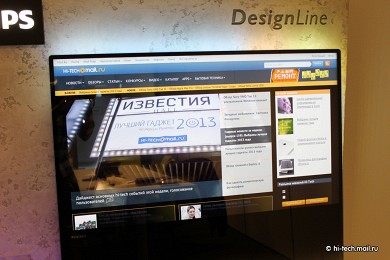
First of all, itself the TV menu has become more responsive to the pressing member. It would seem – a trifle, but on a subconscious level to use the menus become easier. Since navigation sometimes requires a lot of clicks, even the slightest acceleration immediately felt.
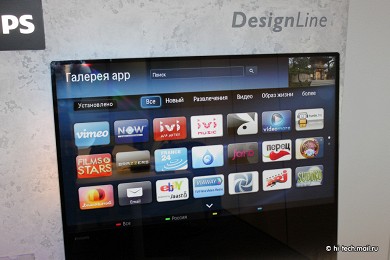
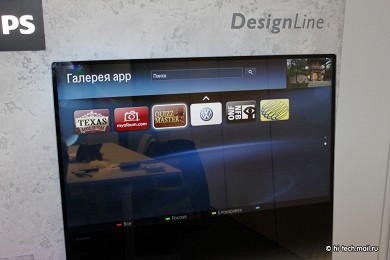
List of applications
added more current versions. For example, in the application online cinema MEGOGO new section with 3D-content, which has about 80 films. Nevertheless, the total number of applications and content Philips Smart TV is still behind the leaders. However, the company is not going to give up – it is clear that the functionality of Smart TV is gradually applied force.
Sound
Looking at TV, you may have doubts as sound – in fact modest speaker system literally hidden behind a thin TV. And these fears are justified: the sound is really turned ugly, as literally separated from the glass surface of the viewer. To the viewer reaches only part of the middle and high frequencies and low pro can not mention. Therefore, the conclusion can be only one television is definitely worth supplement an external sound system, otherwise you risk to deprive yourself of a considerable part of the fun of saturated tracks in movies. However, it is not surprising that the designer TV series had to go to such a compromise.
Image
As usual, we focus on the main TV functions – creating impressive images that would meet all quality standards. To objectively evaluate the image, we use the best video tests and benchmarks, as well as pay attention to the calibration of TVs that you can compare them in fair conditions with optimal settings.
factory settings
TV Philips PDL8908 offers a variety of preset picture modes: “User”, “bright”, “natural”, “Standard”, “Movie”, “Photo”, “Energy saving” and «ISF Day” and «ISF Night . ” We’ll focus only on the most high-quality modes that are less distorted picture and have the most appropriate color reproduction.

By default the “Standard” mode, which is rather suitable for shop conditions. For home decor has too high brightness and unnatural, artificial image with overly cool white. Of all the modes suggested, perhaps, for home is best “Cinema”. Image is more natural and theatrical.
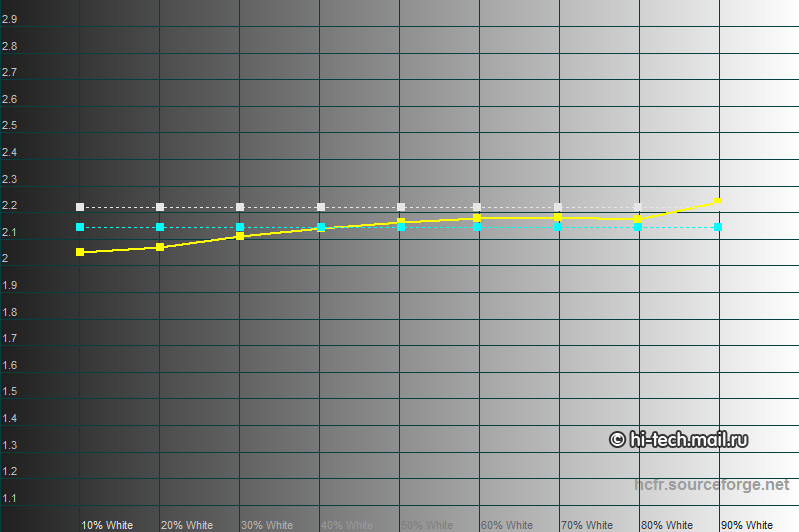
Average gamma – 2.14, which is very close to the optimal indicator 2.2. What is more important – almost linear gamma, ie has no radical changes.
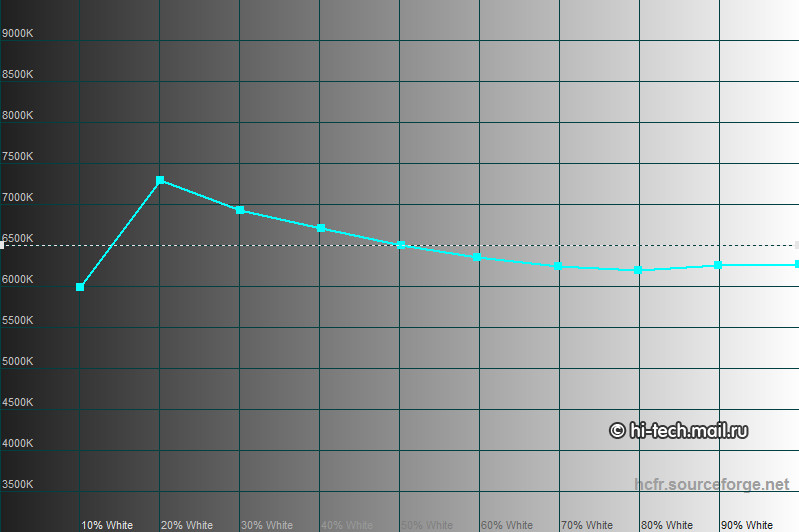
average color temperature close to 6500K, but a transition from the cold shade in the opposite warm. Image not well balanced, gray scale visual painted.
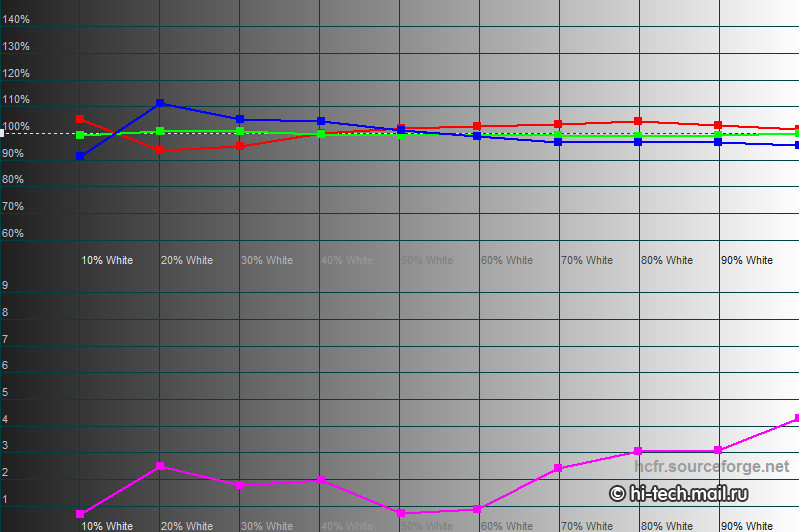
Delta E errors with reasonable: Average Delta E – 2,14 units. Deviations mostly small. But they become more visible because of the “fickle” nature of color balance.
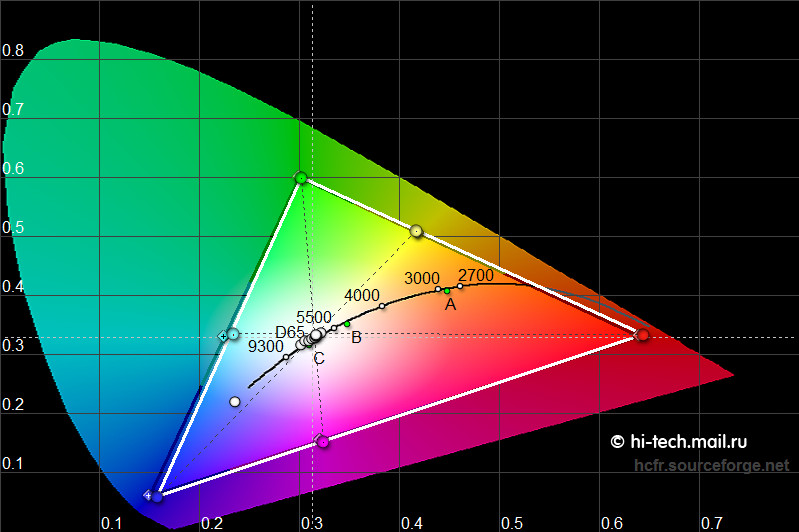
color gamut is very close to the standard Rec. 709 (HDTV). And all the colors are well tuned in brightness, hue and saturation. Therefore, errors DeltaE very low – an average of only 1.6 units, which is commendable for factory settings. And what is the situation with intermediate colors?
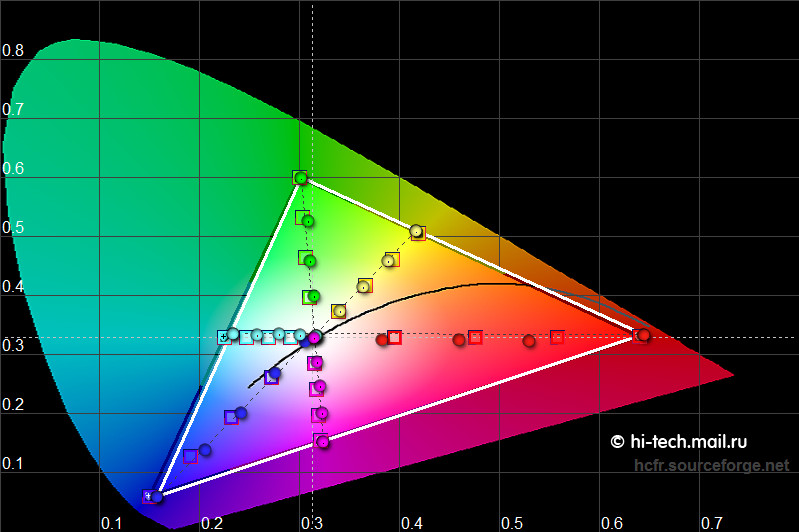
When saturation 25/50/75% all too perfect for a basic setup. Deviations, but they almost do not exceed the limit of the visible – without comparison to a reference display any “misses” will not see.
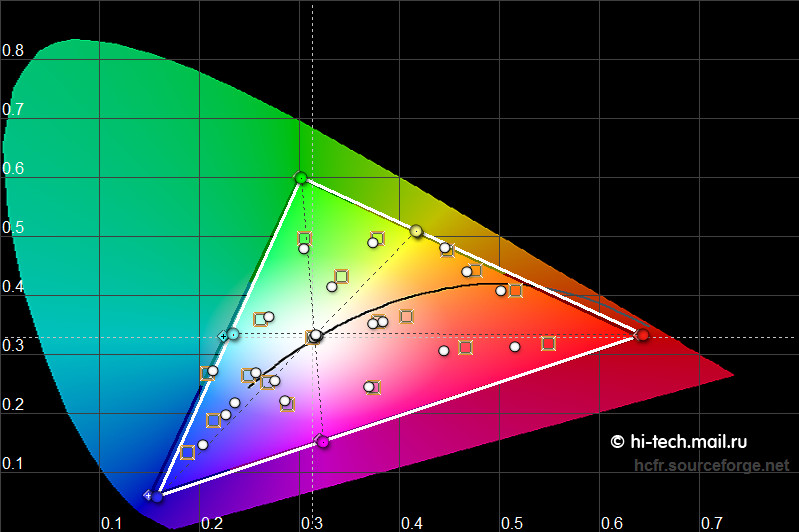
Finally, the average error of Delta E 24 ColorChecker targets again very small – only 1.86 units. In principle, in the “Movies” TV by default has a very good color accuracy. Most viewers will arrange such indicators even without recalibration.
Contrast
In
Philips PDL8908 used LCD panel family VA, which provides a good enough contrast. World records remain in the top-end plasma and OLED, but the contrast ratio of 2100:1 in prepared as ANSI, bad for LCD TV will not name. Most LCD TV with Edge LED backlight in our tests, except models with matrices IPS, fits into the barrier from 2000:1 to 3000:1. For example, at Philips PFL8008 we got is a similar result.
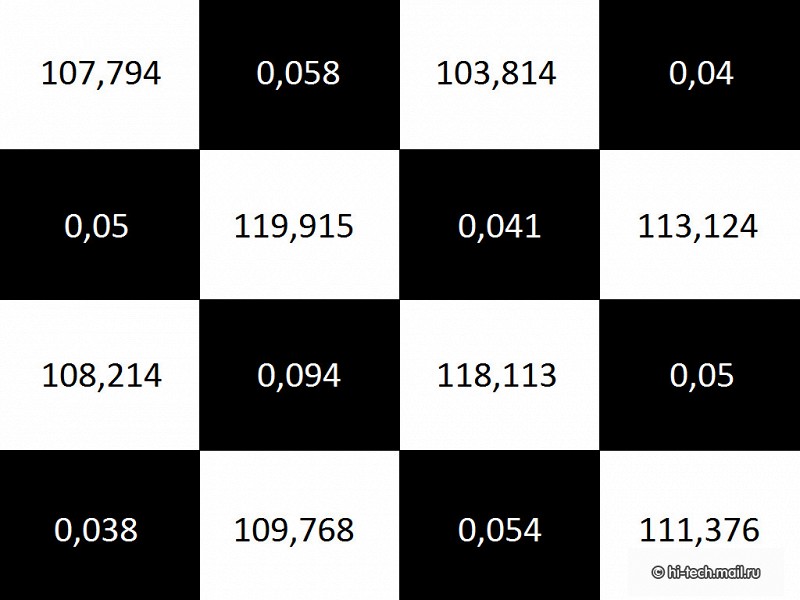
However it is worth considering a moment. As already mentioned, the TV series DesignLine exposed glare, so he has a bright room unsweetened. Well, in a dark room contrast is not too impressive – quite clearly visible illumination, albeit neutral and smooth. Here comes the rescue system backlight Ambilight Spectra XL. In addition to decorative functions, it helps to increase the perceived contrast of the image – in fact, in response to bright illumination, our eyes are less demanding on the depth of black.
transfer of motion
With dynamic scenes Philips PDL8908 demonstrated typical for LCD TVs results. In motion picture loses clarity and smoothly, “blurred”, depending on speed. If all of the additional processing means are switched off, standard stress test demonstrates Motion Resolution 300 lines clearly distinguishable 1080.
In order to improve the clarity of moving images in television is a system of tweening Perfect Natural Motion. If its use, it is possible to achieve improved communication of motion – the clarity increased to about 800 lines of the 1080 movement. At the same time, a so-called effect of “soap opera”, which is probably not likely to appeal to each viewer. Therefore, the settings need to look for a compromise. However, it is critical mainly for dynamic content at 50 and 60 Hz – such as sports broadcasts. Feature films with the standard 24 frames per second is not so much they lack the dynamics.
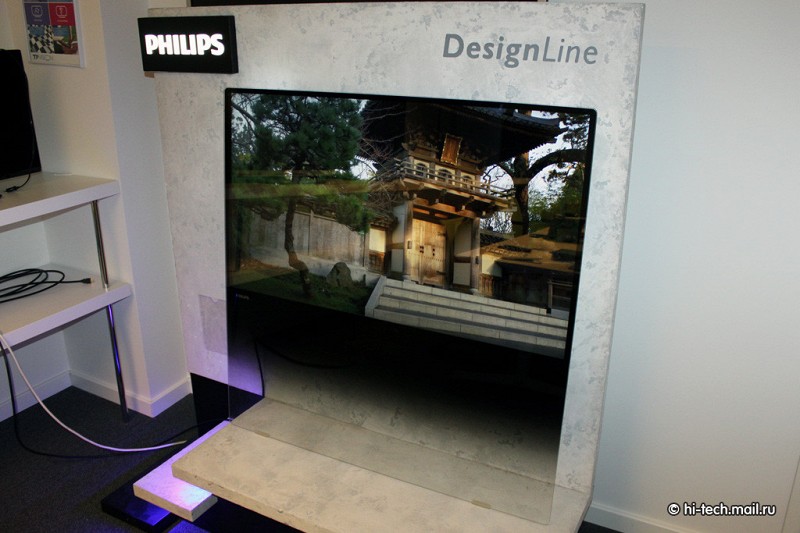
Angles
Angles Philips PDL8908 typical of LCD matrices family VA. Angle shifted hues, the picture gradually loses contrast, although black shade keeps close to neutral. The most comfortable zone – naturally centered on the screen, but strongly deviate from it do not want to: prevent even the image distortion and glare glass screen bathed. In fact, in a bright room at a certain angle image begins to “dissolve” in the reflections, and this should be taken into consideration when installing the TV.

uniform image
uniform illumination, oddly enough, almost did not cause any issues. Black box shows uniform illumination without visible to the naked eye drops or other flaws. It’s pretty rare for an LCD TV case, especially when it comes to side illumination Edge LED. Perhaps an unusual design with a front sheet of glass screen added stiffness, which helped to ensure a more uniform illumination, but it is only our hypothesis.
Subjective tests
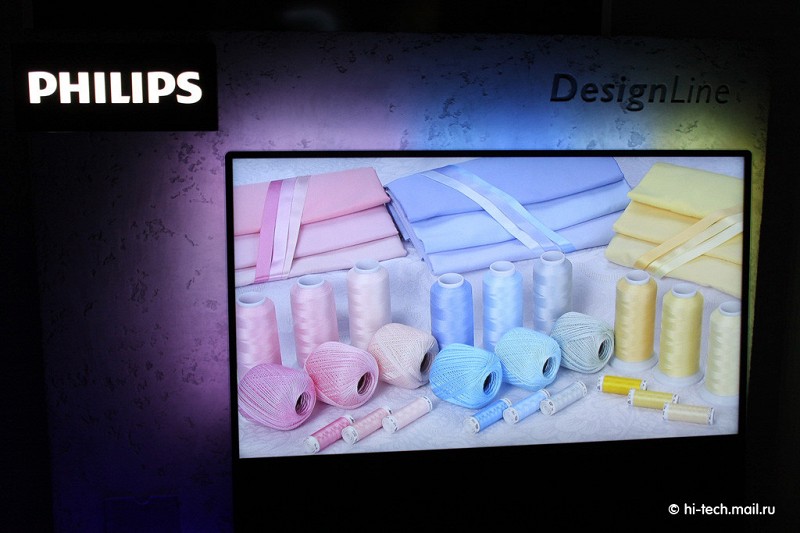
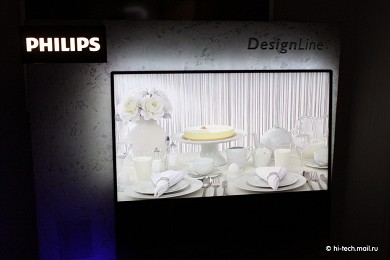
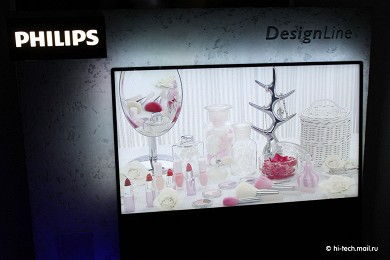
Going to live content, Philips PDL8908 adequately coped with their tasks. First thing in the eye catches the correct color rendering (thanks to the regime of “Cinema”). Skin tones, bright fruit, and all the other natural colors appear on the screen of course, that adds points TV. Small differences in the color balance of light poured out “rainbow” in the shadows, but it will notice only the most picky viewers.
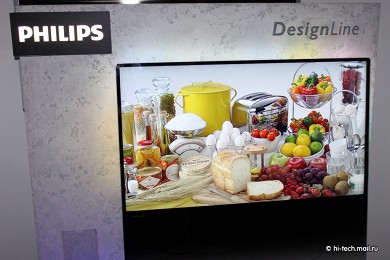
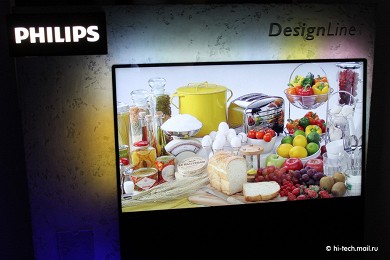
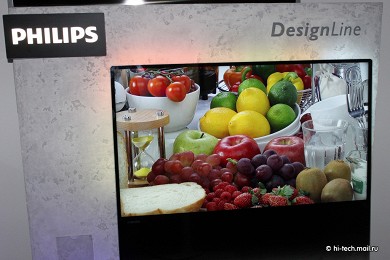
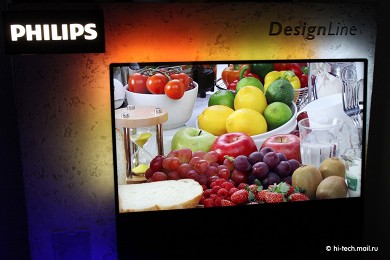
Contrast is good enough to give light volume image. For example, television offhand gives a deeper and richer image black than any representatives IPS. But, as it turned out, this property is in conflict with the front panel glass – “dilute” the contrast is too easy, depending on the incident light. That is, much depends not from the TV, and on the external conditions, which adversely affects the usability.
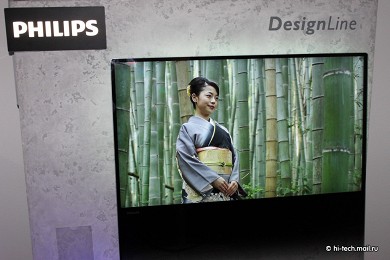
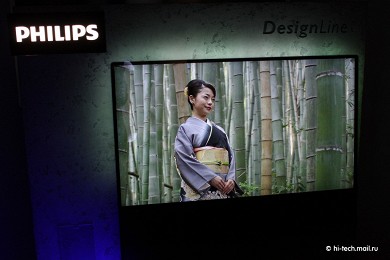
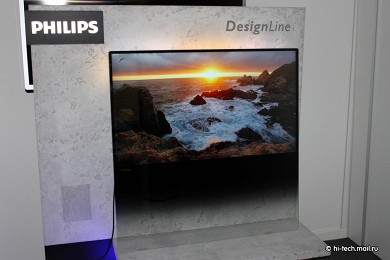
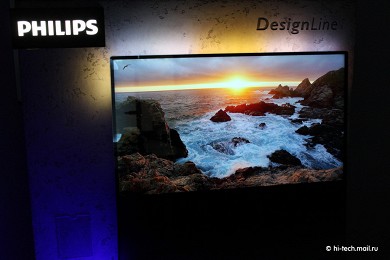
upscaling low-resolution signal at a good level. Let sites have characteristic artifacts on complicated contours, but the image does not appear “blurred” or defocused. That is, most of the TV transmits useful information that was hidden in a modest resolution air signal or DVD. Average manage and de-interlacing, although sometimes there are moments when determining the correct mode is lost, and instead pulldauna 2:2 / 3:2 video mode is activated. This reduces the vertical sharpness and overall quality, but such moments – rather rare.
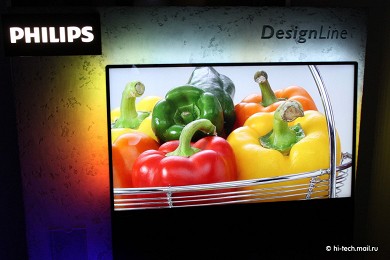
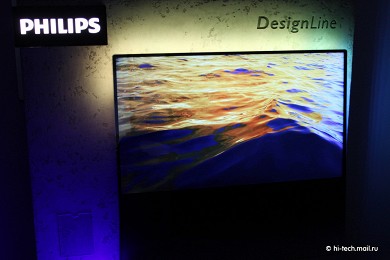
Sources
High Definition, as expected, shine in all its glory. TV Can transmit palette Rec. 709 (HDTV) is quite close to the original, so movies on Blu-Ray here look great – especially in regard to color. There is a feeling of “correct” image when the TV does not look individual link in the chain – on the contrary, TV ceases to be superfluous “mediator” between the source and the viewer.
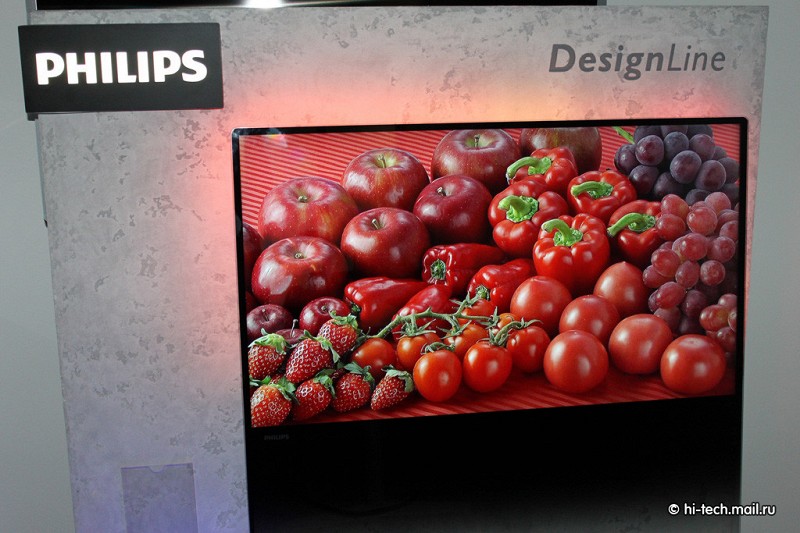
This is where the picture becomes convincing and sometimes “come alive.” Of course, full of happiness and Wah lacks a deep black color, but it is expected for LCD TV backlight Edge LED. Dynamic control with psevdozonami may slightly improve the situation, but does not become a panacea. However, there is another trick.
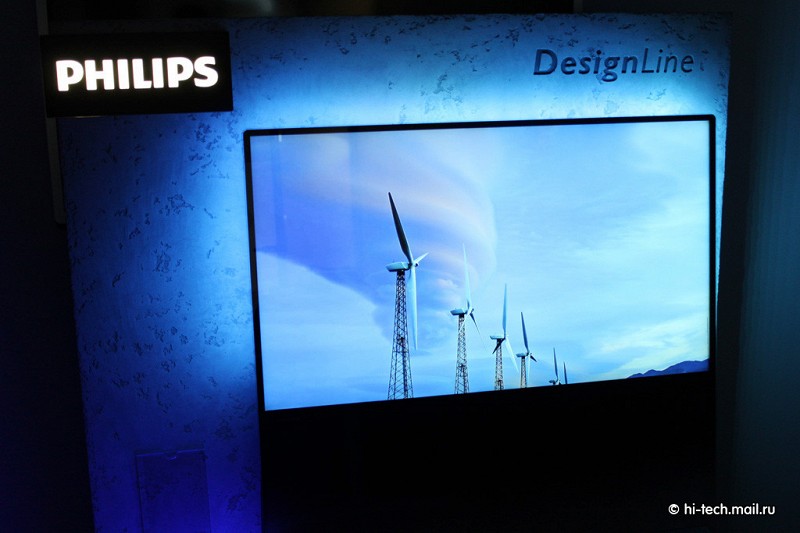
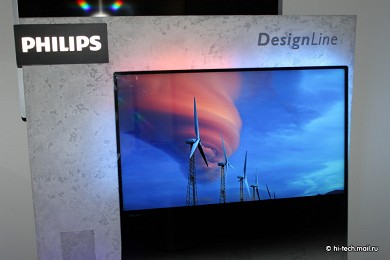
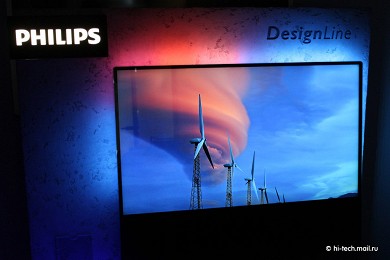
This proprietary backlight Ambilight Spectra XL. Combined with colorful HD it looks very nice. There are modes of dynamic colored lighting or illumination with a fixed tint – for example, a neutral white color. In both cases, optical illusion adds image contrast, and, of course, important purely aesthetic aspect – design in conjunction with the TV backlight looks really unusual.
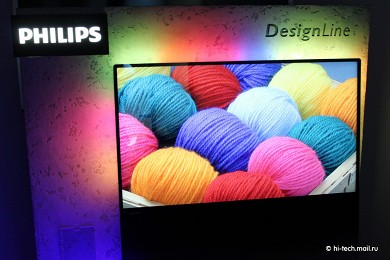
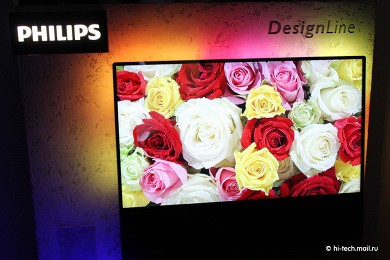
Opinion Hi-Tech.Mail.Ru
TV series from Philips PDL8908 DesignLine – is an analogue of the older models of Full HD Philips, but in a more sophisticated shell. Recently it has become increasingly difficult to stand out a bit from the crowd, and a fresh approach to design – one of the suitable methods. How did it Philips?
If we consider the general idea – that perhaps failed. Television, though similar positions on some existing models still offers its combination of solutions.
No comments:
Post a Comment